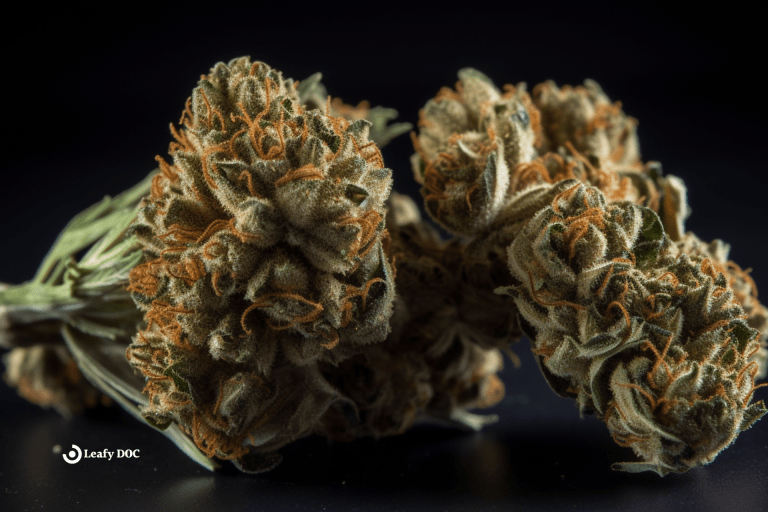Spasticity disorders
Can medical cannabis help people with this condition? Find out more below.
What is a Spasticity Disorder?
Spasticity disorders are a group of conditions characterized by increased muscle tone, involuntary muscle contractions, and stiffness or tightness in the muscles. These disorders often result from damage or dysfunction in the brain or spinal cord, disrupting communication between the nervous system and the muscles. Some common causes of spasticity disorders include cerebral palsy, multiple sclerosis, traumatic brain injury, spinal cord injury, and stroke. Treatment for spasticity disorders typically focuses on managing symptoms and improving the individual’s quality of life.
What causes it?
Spasticity disorders result from damage or dysfunction in the brain or spinal cord, leading to communication disruptions between the nervous system and the muscles. This disruption results in increased muscle tone, involuntary muscle contractions, and stiffness or tightness in the muscles. Some common causes of spasticity disorders include:
- Cerebral palsy: A group of neurological disorders that affect movement and muscle coordination, usually caused by brain damage during fetal development, birth, or shortly after birth.
- Multiple sclerosis (MS): An autoimmune disease in which the immune system attacks the protective covering of nerve fibers, causing communication problems between the brain and the rest of the body.
- Traumatic brain injury (TBI): Damage to the brain caused by an external force, such as a blow to the head or a penetrating injury.
- Spinal cord injury: Damage to the spinal cord that disrupts communication between the brain and the body, often resulting from accidents, falls, or violence.
- Stroke: A sudden interruption in blood flow to the brain, typically caused by a blood clot or a ruptured blood vessel, leading to brain cell death and potential damage to the brain’s motor control areas.
How common is it?
The prevalence of spasticity disorders varies depending on the underlying cause. For instance:
- Cerebral palsy affects approximately 2 to 3 out of every 1,000 live births.
- Multiple sclerosis is estimated to affect more than 2 million people worldwide.
- Traumatic brain injuries are a leading cause of disability, with millions of people affected each year globally.
Are there types/stages?
Spasticity can present differently and may be classified based on the affected body region or the underlying cause. For example:
- Focal spasticity: Involving a specific muscle group or a single limb.
- Generalized spasticity: Affecting multiple limbs or large portions of the body.
The severity of spasticity can also vary significantly between individuals, ranging from mild stiffness to severe, debilitating muscle contractions. Spasticity disorders do not have specific stages, but the severity and functional impact can change over time, especially with appropriate treatment and management.
Signs & Symptoms
Symptoms of spasticity disorders can vary in severity and may include the following:
- Muscle stiffness or tightness
- Muscle spasms or involuntary contractions
- Decreased range of motion in the affected joints
- Clonus, which is a series of rapid, rhythmic muscle contractions
- Pain or discomfort
- Difficulty with movement, coordination, and balance
Diagnosis & Treatment
Diagnosing and treating spasticity disorders typically involves a multidisciplinary approach, as the diseases can be complex and may require input from various medical specialists. Here’s an overview of the process:
- Medical history: The physician will gather information about the patient’s medical record, including the onset of symptoms, known underlying conditions, and family history of neurological disorders.
- Physical examination: The doctor will perform a thorough physical examination to assess muscle tone, strength, reflexes, range of motion, and coordination. They will also look for signs of muscle stiffness, spasms, or involuntary contractions.
- Neurological examination: A detailed assessment of the patient’s nervous system function can help identify any abnormalities in movement, sensation, or reflexes that may indicate a neurological disorder.
- Imaging studies: Diagnostic imaging techniques like magnetic resonance imaging (MRI), computed tomography (CT) scans, or X-rays can help identify structural abnormalities in the brain or spinal cord or reveal the cause of the spasticity (e.g., stroke, brain injury, or multiple sclerosis).
- Additional tests: Depending on the suspected underlying cause, further tests may be necessary, such as blood tests, lumbar puncture, or electrodiagnostic studies like electromyography (EMG) and nerve conduction studies (NCS).
The treatment for spasticity disorders aims to manage symptoms, improve function, and enhance the patient’s quality of life. The specific treatment plan will depend on the severity of the spasticity, the underlying cause, and the patient’s needs. Standard treatment options include:
- Physical therapy: Physical therapists can help patients improve their strength, flexibility, and range of motion through targeted exercises, stretches, and manual therapy techniques.
- Occupational therapy: Occupational therapists can help patients develop strategies to perform daily activities more efficiently and adapt to their limitations.
- Oral medications: Various medications, such as muscle relaxants (e.g., baclofen, tizanidine, or dantrolene), benzodiazepines, or anticonvulsants, can help manage muscle stiffness and spasms.
- Injectable treatments: Botulinum toxin (Botox) injections can target specific muscles or muscle groups, temporarily reducing spasticity and improving function.
- Intrathecal baclofen therapy: In severe cases, a programmable pump can be implanted under the skin to deliver a continuous dose of baclofen (a muscle relaxant) directly to the spinal fluid, providing more effective spasticity control with fewer side effects.
- Surgical interventions: In some cases, surgical procedures like tendon release, tendon transfer, or selective dorsal rhizotomy may reduce spasticity and improve function, especially when other treatments have been ineffective.
Working closely with healthcare professionals to develop a personalized treatment plan that addresses the patient’s unique needs and goals is essential. Treatment plans should be regularly reviewed and adjusted as needed to optimize outcomes.
Can medical cannabis help?
Medical marijuana has shown the potential to help manage symptoms associated with spasticity disorders. Some of the potential benefits include the following:
- Reducing muscle stiffness and spasms: Cannabinoids may have muscle-relaxing properties that can help alleviate muscle stiffness and involuntary contractions.
- Alleviating pain: Medical marijuana can have analgesic effects, which may help manage spasticity-related pain.
- Improving sleep: Spasticity disorders can cause sleep disturbances due to muscle stiffness or spasms, and medical marijuana may help enhance sleep quality.
A study published in the Journal of Neurology, Neurosurgery, and Psychiatry (2012) investigated the effectiveness of THC: CBD spray (Sativex) in patients with treatment-resistant multiple sclerosis (MS) spasticities. The study found that Sativex provided a statistically significant improvement in spasticity and was well-tolerated by patients. The study concluded that THC: CBD spray could be a useful treatment option for patients with MS-related spasticity that is not adequately managed with current therapies.
A systematic review published in the journal Frontiers in Neurology (2018) examined the efficacy and safety of cannabinoids for treating spasticity in patients with multiple sclerosis. The review found that cannabinoids effectively reduced patient-reported spasticity and were generally well-tolerated. However, the authors also noted the need for more high-quality studies to confirm these findings.
Last Updated: June 14, 2024
Get Your Medical Card
Connect with a licensed physician online in minutes
Table of Contents
Keep Reading
-
The 3 Best Cheese Weed Strains Of All Time
Craving a mind-blowing experience? Discover the top 3 cheese weed strains that will leave you wanting more. Don’t miss out on these ultimate varieties – click now!
-
Uncovering The Benefits Of Medical Marijuana
Unveiling the Life-Changing Benefits of Medical Marijuana – Click now to learn how this revolutionary treatment is transforming lives and overcoming stigma. Don’t miss out on discovering the incredible advantages that could improve your well-being!
-
Sip Away Anxiety With Cannabis Tea
Unwind and de-stress with cannabis tea for anxiety. Learn how this natural remedy can help you relax and sip your worries away. Try it today to experience the calming benefits yourself!



